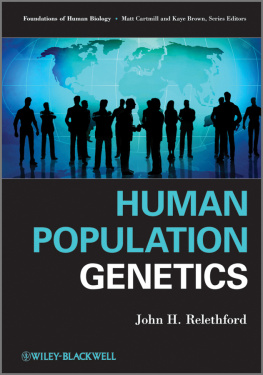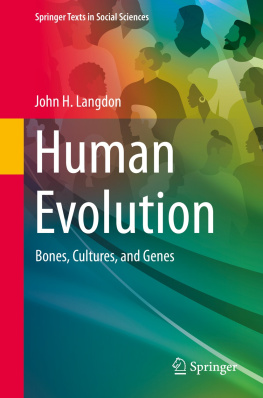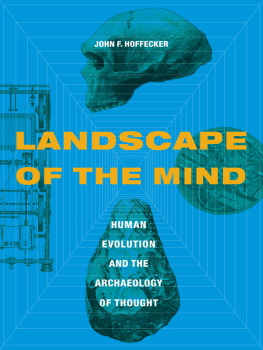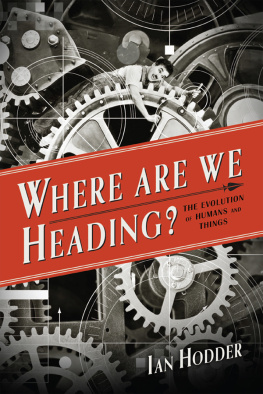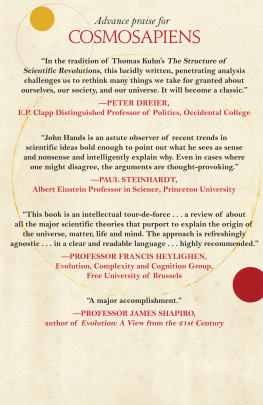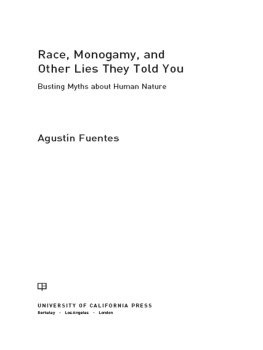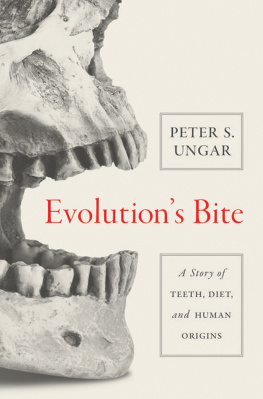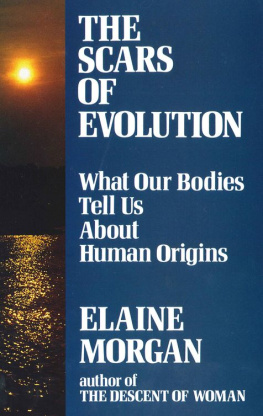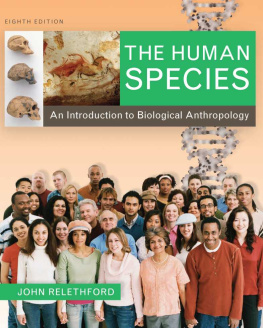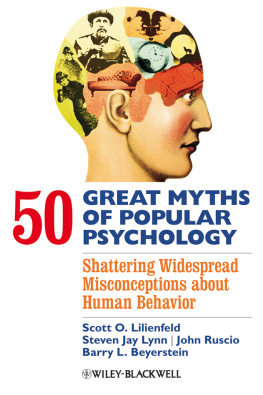
Table of Contents
List of Illustrations
- Chapter 01
- Chapter 02
- Chapter 03
- Chapter 04
Guide
Pages
50 GREAT MYTHS OF HUMAN EVOLUTION
UNDERSTANDING MISCONCEPTIONS ABOUT OUR ORIGINS
John H. Relethford
This edition first published 2017
2017 John Wiley & Sons, Inc
Registered Office
John Wiley & Sons, Ltd, The Atrium, Southern Gate, Chichester, West Sussex, PO19 8SQ, UK
Editorial Offices
350 Main Street, Malden, MA 021485020, USA
9600 Garsington Road, Oxford, OX4 2DQ, UK
The Atrium, Southern Gate, Chichester, West Sussex, PO19 8SQ, UK
For details of our global editorial offices, for customer services, and for information about how to apply for permission to reuse the copyright material in this book please see our website at www.wiley.com/wileyblackwell.
The right of John H. Relethford to be identified as the author of this work has been asserted in accordance with the UK Copyright, Designs and Patents Act 1988.
All rights reserved. No part of this publication may be reproduced, stored in a retrieval system, or transmitted, in any form or by any means, electronic, mechanical, photocopying, recording or otherwise, except as permitted by the UK Copyright, Designs and Patents Act 1988, without the prior permission of the publisher.
Wiley also publishes its books in a variety of electronic formats. Some content that appears in print may not be available in electronic books.
Designations used by companies to distinguish their products are often claimed as trademarks. All brand names and product names used in this book are trade names, service marks, trademarks or registered trademarks of their respective owners. The publisher is not associated with any product or vendor mentioned in this book.
Limit of Liability/Disclaimer of Warranty: While the publisher and author have used their best efforts in preparing this book, they make no representations or warranties with respect to the accuracy or completeness of the contents of this book and specifically disclaim any implied warranties of merchantability or fitness for a particular purpose. It is sold on the understanding that the publisher is not engaged in rendering professional services and neither the publisher nor the author shall be liable for damages arising herefrom. If professional advice or other expert assistance is required, the services of a competent professional should be sought.
Library of Congress CataloginginPublication data applied for
9780470673911 (Hardback)
9780470673928 (Paperback)
A catalogue record for this book is available from the British Library.
Cover image: Wlad74/Getty images
To the next generation:
My sons and my daughtersinlaw,
Benjamin, David, Zane, Krissy, and Rachel,
and my nieces and nephews,
Adam, Burton, Dana, Evan, Katie, Maya, Melinda,
Noah, and Rebecca
Ldor vdor
PREFACE
I find that many people have a strong desire to learn about human evolution and our origins as part of a larger interest in the human condition. There are many ways to contemplate the origin and destiny of humanity, including the arts, literature, philosophy, religion, and science. A strong education in the liberal arts teaches us that there are many different ways to consider our nature and our place in the universe. This book deals with one aspect of the quest to understand the nature of humanityusing science to understand our existence as biological and cultural organisms subject to the evolutionary forces that affect all living creatures.
This book is not meant to be a textbook or a technical monograph. It represents my attempt as a teacher (I am a college professor) to explain a complex subject in a relatively short amount of space (and with the goal that you will go beyond my brief introductions to read and research topics of interest in more depth). Myths, mistakes, and misconceptions provide the focus for a broader treatment of the concepts, methods, and evidence for the history of our species. Above all, the study of human evolution is the study of human history, in the broadest possible sense, and it applies to all of us. No matter what else separates us all, the origin and evolution of humans is a history that we all share.
For a long time, I was interested in writing a trade book on human evolution, but had a hard time getting started. I have written several books, but my previous works were either college textbooks or books that wound up going into more specialized areas. Although I enjoyed researching and writing such books, I still wanted to have something on a more general level covering a wide range of topics in human evolution. For a while, I thought about trying to put together a book on The top X things you should know about human evolution, where X was usually some number between 10 and 20, but never got started. I needed a hook, or a push.
In January 2011, I got both a hook and a push. A longtime colleague and friend, Rosalie Robertson, who was then a senior editor at WileyBlackwell, approached me and asked if I was interested in submitting a prospectus for a book on the 50 Great Myths of Human Evolution. After some thought, I realized that I could discuss many of the concepts of human evolution, past and present, within the structure of a book focusing on myths and misconceptions about human origins and evolution. After an extended delay due to a bout with cancer, this book is the result of that initial conversation. I am grateful to Rosalie for her vision and imagination and her patience with my questions and concerns. Thank you, my friend.
I have also benefited from the hard work and dedication of many people that worked on this project at WileyBlackwell. Thanks to Ben Thatcher and Mark Graney, who were involved in the initial submission and review process, and to Mark Calley and Tanya McMullin. Special thanks to the project editor, Roshna Mohan, for her patience with my endless questions and concerns, and to the copyeditor, Alta Bridges, for keeping track of endless details and for making the text more readable. I thank those colleagues that reviewed the initial proposal: David Begun (University of Toronto), Robin Dunbar (University of Oxford), Paul Lurquin (Washinton State University), Fred Smith (Illinois State University), Simon Underdown (Oxford Brookes University), and Bernard Wood (George Washington University). I am very grateful to Clark Larsen (Ohio State University) for his reading of both the proposal and the entire manuscript as well as answering specific questions. I am also grateful to Deborah Bolnick (University of Texas) and P. Thomas Schoenemann (Indiana University) for their assistance.
Finally, I have to give thanks to my wife, Hollie Jaffe, for support and guidance throughout this book, my career, and my life.
INTRODUCTION : Myths and misconceptions (or how and why I wrote this book)
What is a myth, and what are the myths of human evolution? I started giving these questions some thought several years ago when I was approached by the publisher to submit a proposal for a book to be called 50 Great Myths of Human Evolution. They had already published a book on misconceptions in psychology entitled 50 Great Myths of Popular Psychology and were interested in publishing more books along the same line, focusing on the 50 great myths of various fields, including human evolution. I was intrigued by the suggestion, as I had been contemplating a general book on human origins and evolution for a while. However, I was a little apprehensive about how to approach the idea of myths in human evolution. Like many words, the term myth has both narrow and broad meanings. My apprehension stemmed from a narrow interpretation of myth.
Next page

